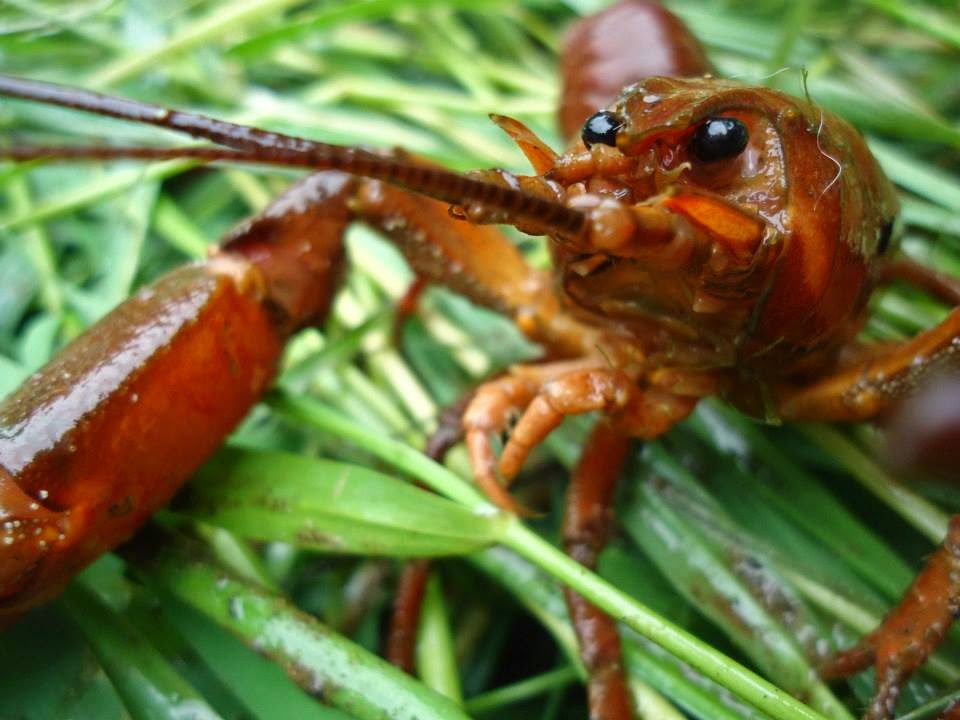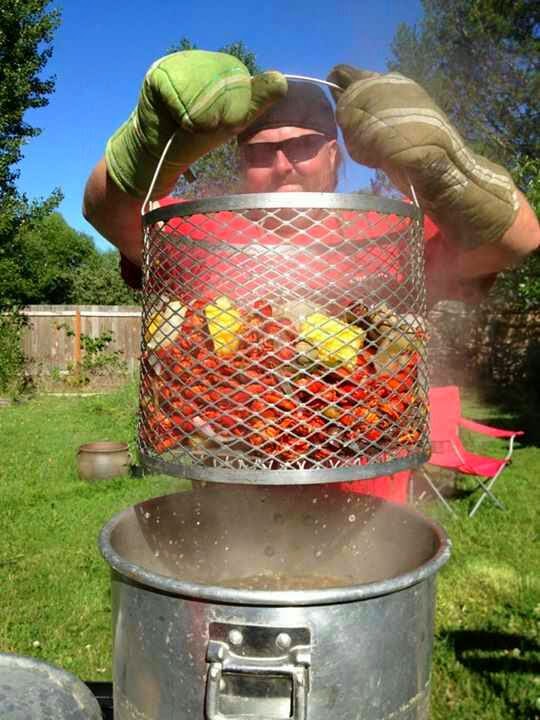Full version of this article is available online at Wide Open Spaces:
 |
| Photo by Colin Walsh |
Recreational harvesting does not require a license in Oregon and you need very little equipment to collect them from the river. With quick reflexes, you can grab them behind the head, beyond the reach of their claws, but nets are more efficient when they kick their tails and use the current to sweep them out of reach. If you're lacking the ambition of harvesting them manually, traps work well when baited with any sort of oily meat that triggers their sense of smell. Given enough food, they will eventually fill themselves and escape out the same way they came in. Using some sort of mesh bag or pantyhose will keep them busy for hours trying to get the bait inside. Once you've collected your haul, it's good to make sure they stay cool and have fresh water. Get them back to the site where you plan to cook them as soon as possible to prevent them from dying off beforehand.
Once you've gotten them where you plan to cook, put them in a large cooler with just enough fresh tapwater to cover them and roughly a pound of salt. Stir them in the saltwater solution for 5-10 minutes. This will remove the parasites that have attached themselves to these river-bottom creepy crawlers. By now you should have all your ingredients in the boiling pot and a cage that will strain out the goods when the session is over. Once the water reaches a hard boil, net the clean crawfish from the saltwater solution and drop them into the pot... alive. They will begin to turn a bright red color within a few seconds, and within 10-15 minutes they will be done. Any longer than this and the meat will become more difficult to extract from the hard-shelled exoskeleton. Some of the basic ingredients essential to the boil include salt, butter, lemon, corn on the cob, onion and potatoes. Zatarains, Louisiana Brand or Old Bay boil seasonings work well as a key spice component. Don't be afraid to get use your imagination and add other ingredients like whole artichokes, shrimp, crab, whole spring onions, leeks, red-hots or sausages. When the boil is finished, pull the cage out of the pot and pour everything onto a table lined with paper to absorb the moisture and make cleanup easier. Traditionally there are no plates or utensils for this kind of eating other than your hands. Be aware that if any of the crawfish died previous to the boil, they will quickly begin to spoil. You can spot these after they've been laid out on the table because their tail will be straight. The boil will cause the live ones to curl their tails and remain in that position. Any crawfish with straight tails should be discarded. Pull the tail from the head, then start peeling the armored plating on the tail back with your thumb. The little morsel of tail meat is similar to lobster in flavor, but with a much softer texture. The mess left behind after peeling is also a great addition to garden compost.
Leftovers can be used to make jambalaya, gumbo or etouffee. Jambalaya is meat and vegetables cooked or simmered together in the broth with rice. Gumbo is a soup made from the broth, commonly served with a side of rice. Etouffee is a sauce simmered and thickened, served on top of rice. Knowing the difference between the three will give you an edge as a gulf-coast tourist if you get caught in a conversation in New Orleans about how superior the native Oregonian signal crayfish is to the Louisiana red swamp crawfish. Catching and cooking these tasty aquatic arthropods is a great addition to any summertime gathering.
This piece was featured in the July 3rd issue of the Corvallis Advocate
http://www.corvallisadvocate.com/2014/cooking-and-catching-crawfish/
http://www.corvallisadvocate.com/2014/cooking-and-catching-crawfish/
